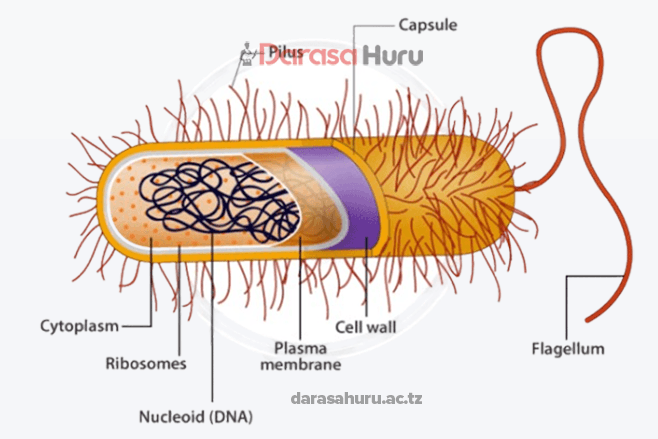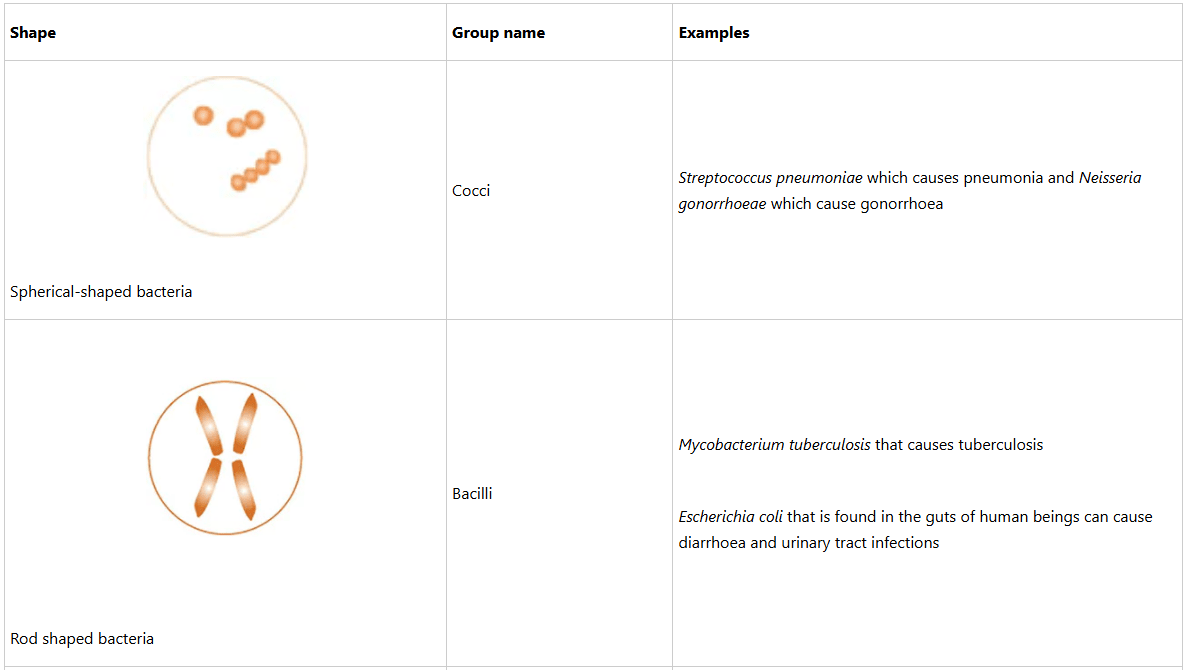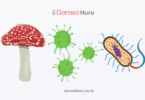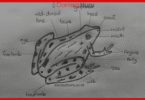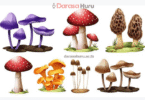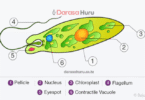Kingdom Monera – Classes, Advantages and Disadvantages
The Kingdom Monera includes prokaryotic organisms like bacteria, which are divided into two main classes: Archaea and Bacteria. Key advantages include their vital role in decomposition and nutrient cycling, their use in food production and biotechnology, and their ability to form essential symbiotic relationships. However, disadvantages include their role as disease-causing pathogens and agents of food spoilage.
Task 2
From different reliable internet sources and biology books, read about the characteristics of bacteria, their advantages and disadvantages.
Kingdom Monera consists of bacteria and blue-green algae. The scientific study of bacteria is called Bacteriology.
Characteristics of bacteria
(a) They are prokaryotic as their cells lack a well-defined nucleus. Their nucleus has no nuclear membrane. They also lack other membrane bound organelles.
(b) They are small unicellular organisms. Some bacteria stick together to form chains or clusters called colonies.
(c) Some are free-living while others are parasites or saprophytes. Free-living bacteria means that they exist on their own. Parasitic bacteria depend on other organisms known as hosts for their needs. Examples of hosts are human beings and other animals. Saprophytic bacteria get their food from dead organic matter by external digestion.
(d) Free-living bacteria and some parasitic bacteria have flagella for movement.
(e) Bacteria have a slimy outer layer. This layer helps to protect them from parasites like viruses and predators, such as protozoa.
(f) They reproduce asexually by binary fission or through spores.
(g) They occur in various shapes. There are five known shapes of bacteria. These are spherical-shaped bacteria or cocci (singular is coccus), rod-shaped or bacilli (singular is bacillus), spiral-shaped bacteria or spirilla (singular is spirillum), and comma-shaped bacteria or vibrio (singular is vibrion). The following Table shows various shapes of bacteria.
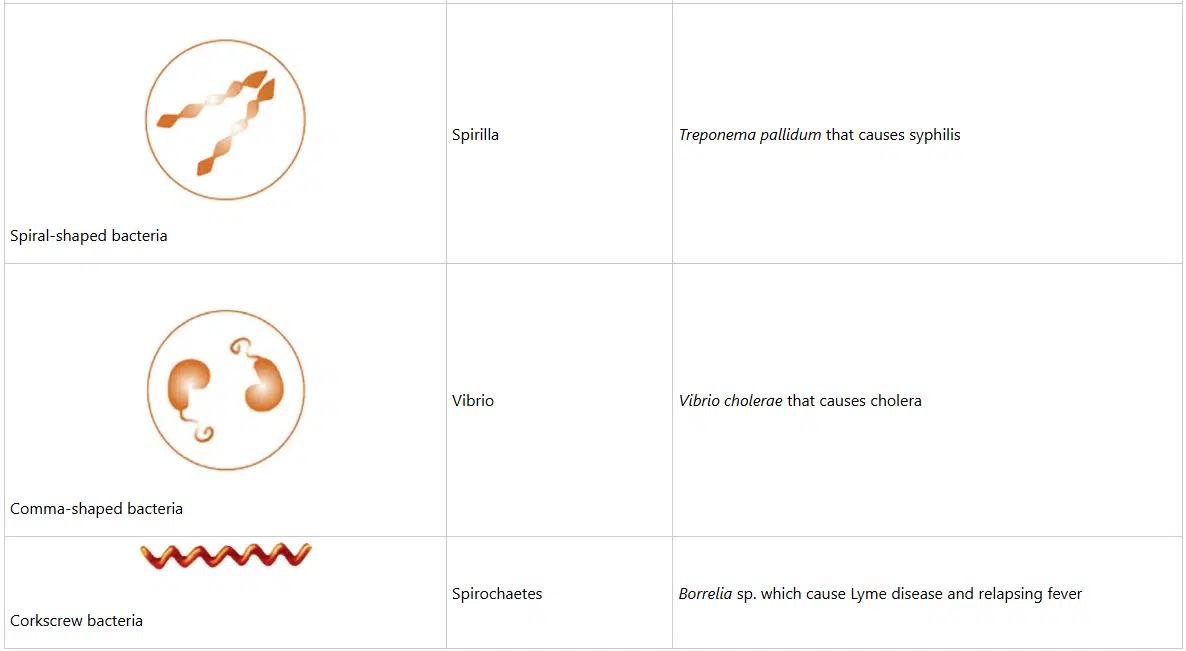
Activity 1
Observing features of bacteria
Materials
Microscope, prepared microscope slides of bacteria, charts showing structure of bacteria, ICT tools, notebook, and pen or pencil
Procedure
1. Observe the charts that show structure of bacteria or prepared slides of bacteria using the microscope.
2. Search from reliable internet sources the videos that show structures and shapes of bacteria.
3. Describe the shapes and structural features of the bacteria you observed.
4. Based on your observations and comparisons with diagrams in Figure 5.4, discuss any similarities and differences you noted between the observed bacteria and the diagrams in Figures below
Structure of bacteria
Bacteria have circular DNA suspended in the cytoplasm without being enclosed by the nuclear membrane. The cell wall encloses the cell membrane. Figure 5.5 shows a generalised structure of a bacterium.
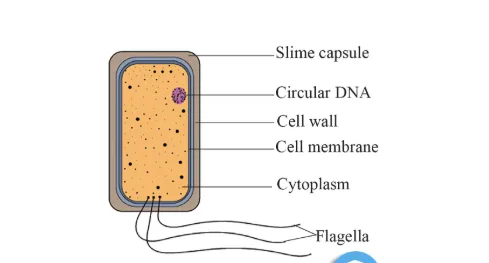
Bacteria can be pathogenic or non-pathogenic.
Task 3
Search for information on pathogenic and non-pathogenic bacteria from the library and reliable internet sources.
Pathogenic bacteria
These are bacteria that can cause infections and diseases. Some of the diseases caused by bacteria in plants are fire blight and crown gall. In animals, bacteria cause diseases, such as tuberculosis, tetanus, cholera, and gonorrhoea.
Pathogenic bacteria have features that facilitate the spread of diseases and infections which include fimbriae or pili and flagella.
Fimbriae or pili
Fimbriae are hair-like structures on the surface of some bacteria. For example, Escherichia coli have fimbriae that attach themselves to the lining of the urinary tract or the intestines. Example of the structure of bacterium with fimbriae is shown in Figure

Flagella
These are long tail-like structures that help some pathogenic bacteria to move. An example of bacteria with flagella is shown in Figure

Toxins
Some bacteria produce toxic compounds that harm their hosts. Human body reacts to the produced toxins by inducing vomiting and diarrhoea in order to remove those toxins. For instance, toxins released by Clostridium sp. can lead to severe diarrhoea due to body reaction.
Bacteria also perform invasion and colonization; transformation; and resistance. Invasion and colonization happen when bacteria attack cells and tissues and reproduce rapidly. Bacteria can transform themselves and become resistant to modes of treatment. For example, the bacterium that causes tuberculosis has become resistant to many antibiotics by transforming itself.
Non-pathogenic bacteria
These are bacteria that are harmless even when they are in a plants or animal’s body. For example, Rhizobium sp. that are found in the root nodules of leguminous plants, help to convert atmospheric nitrogen into nitrates in the soil. Bacteria in the human gut synthesize vitamins K and B12.
Advantages of bacteria
(a) Some non-pathogenic bacteria feed on substances that are harmful to the environment, and in the process neutralize them. For example, they neutralize petroleum waste from petroleum industries, dyes and pesticides, thereby making the environment clean.
(b) Bacteria in the stomach of ruminant animals, such as goats and cattle secrete cellulase enzyme. Cellulase enzyme helps in the digestion of cellulose which forms a large part of the diet of ruminants.
(c) Nitrogen-fixing bacteria live in the root nodules of leguminous plants. They convert free nitrogen in the air into nitrates in soil which can be used by plants to make proteins.
(d) Many bacteria are decomposers. They break down the dead bodies of plants and animals to release important elements, such as nitrogen, carbon, and phosphorus which can be recycled.
(e) Some bacteria produce lactic acid as a result of fermentation of carbohydrates. This is important in the production of cheese, yoghurt, vinegar, and alcohol.
(f) Some bacteria are used to produce antibiotics, which are used to treat bacterial infections.
(g) Bacteria are used in genetic engineering to produce hormones, such as insulin and human growth hormone.
(h) Bacteria such as Escherichia coli in the human gut synthesize vitamins K and B12.
Disadvantages of bacteria
(a) Many bacteria cause infections and diseases in animals. Some of the common bacterial diseases of animals are typhoid fever caused by Salmonella typhi, Tuberculosis (TB) caused by Mycobacterium tuberculosis and gonorrhoea caused by Neisseria gonorrhoeae.
(b) Some bacteria cause crops diseases. Examples of these diseases are fire blight on pea and apple, and leaf spot in cotton.
(c) Some bacteria cause food spoilage by decaying stored food and making it unsuitable for human consumption.
(d) Sulphur bacteria produce sulphuric acid, which causes damage to buried metal pipes.
(e) Denitrifying bacteria convert soil nitrates into atmospheric nitrogen; therefore, they reduce soil fertility.

Advantages of Kingdom Monera
Ecological Roles: Monera are essential for decomposing dead organic matter, which recycles nutrients back into the ecosystem.
Nitrogen Fixation: Certain bacteria convert atmospheric nitrogen into a usable form for plants, which is crucial for agriculture.
Food and Fermentation: They are used to produce many foods, such as yogurt, cheese, and vinegar.
Symbiotic Relationships: Many Monera form beneficial relationships with other organisms, such as aiding in digestion in animals.
Biotechnology: They are used in various applications, including bioremediation, sewage treatment, biogas production, and the synthesis of antibiotics and other pharmaceuticals.
Disadvantages of Kingdom Monera
Disease: Many monerans are pathogens that cause diseases in humans, animals, and plants (e.g., tuberculosis, pneumonia, typhoid).
Food Spoilage: Bacteria can spoil food and cause food poisoning through the release of toxins.
Economic Loss: Food spoilage and disease outbreaks caused by monerans can result in significant economic losses.
Exercise 2
1. Your friend has disposed a fruit to a dump site. Explain what may happen to a fruit overtime and provide reasons why the process is important for environmental conservation.
2. Students are advised to wash their hands after handling samples of bacteria. What is the reason for this advice?
3. Describe a generalised structure of a bacterium.

